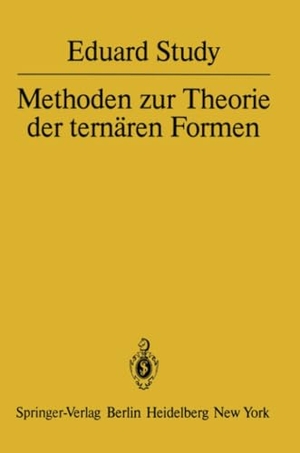Für statistische Zwecke und um bestmögliche Funktionalität zu bieten, speichert diese Website Cookies auf Ihrem Gerät. Das Speichern von Cookies kann in den Browser-Einstellungen deaktiviert werden. Wenn Sie die Website weiter nutzen, stimmen Sie der Verwendung von Cookies zu.
Cookie akzeptieren
E. Study
Methoden zur Theorie der ternären Formen
- Springer Berlin Heidelberg
- 2012
- Taschenbuch
- 240 Seiten
- ISBN 9783642675331
to E. Study's "Methoden zur Theorie der ternären Formen" Study's "Ternary Fonns" presents a view of classieal invariant theory that remains little known to this day, and that deserves attentive reading. When the book was published, the combinato rial investigations of Gordan and of the English school were in their heyday. Hilbert's sweeping finiteness results were not yet available, and the term "algebraie geometry" had yet to take hold. Study's goals were geometrie rather than algebraie. He viewed the symbolic method as an algebraic machinery for the description of geometrie properties, and his style of proof, eoneeptual to the ut most, invariably follows a background of geometrie motivation, whieh unfortunately the author seldom reveals. Like almost everyone in his time, Study either ignored or dis believed the work of Hermann Grassmann, to
Mehr
Weniger
zzgl. Versand
in Kürze